|
Indicator minor (Lesser
honeyguide)
Kleinheuningwyser [Afrikaans]; Intakobusi (generic term
for honeyguide) [Xhosa]; iNhlava (also applied to Scaly-throated honeyguide)
[Zulu]; Kasoro (generic term for honeyguide/honeybird) [Kwangali]; Molisa-linotši
(also applied to Brown-backed honeybird) [South Sotho]; Nhlalala (generic term
for honeyguide) [Tsonga]; Kleine honingspeurder [Dutch]; Petit indicateur
[French]; Kleiner honiganzeiger [German]; Indicador-pequeno [Portuguese]
Life
> Eukaryotes >
Opisthokonta
> Metazoa (animals) >
Bilateria >
Deuterostomia > Chordata >
Craniata > Vertebrata (vertebrates) > Gnathostomata (jawed
vertebrates) > Teleostomi (teleost fish) > Osteichthyes (bony fish) > Class:
Sarcopterygii (lobe-finned
fish) > Stegocephalia (terrestrial
vertebrates) > Tetrapoda
(four-legged vertebrates) > Reptiliomorpha > Amniota >
Reptilia (reptiles) >
Romeriida > Diapsida > Archosauromorpha > Archosauria >
Dinosauria
(dinosaurs) > Saurischia > Theropoda (bipedal predatory dinosaurs) >
Coelurosauria > Maniraptora > Aves
(birds) >
Order: Piciformes
> Family: Indicatoridae
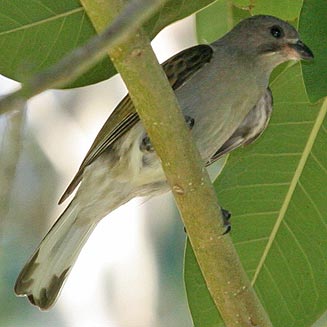 |
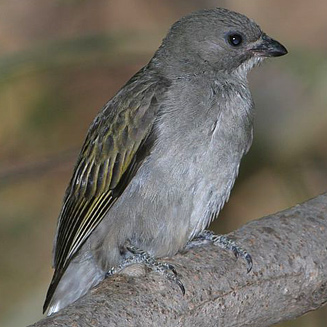 |
|
Lesser honeyguide, West Coast Fossil Park, Western Cape, South Africa. [photo H. Robertson,
Iziko ©] |
Lesser honeyguide, Waterberg, South Africa. [photo
Trevor Hardaker ©] |
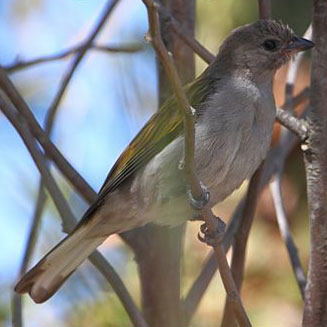 |
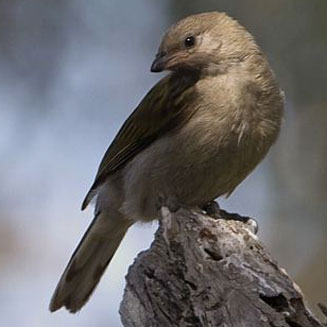 |
|
Lesser honeyguide, Darling Hills, South Africa. [photo
Trevor Hardaker ©] |
Lesser honeyguide juvenile, Darling Hills, South Africa. [photo
Trevor Hardaker ©] |
The Lesser honeyguide lives in sub-Saharan Africa, absent for
the dense forests and arid areas, but otherwise occurring in a wide variety of
habitats. It feeds on a wide range of insects, as well as a Honeybees (Apis
mellifera) and the honey they produce. It is a brood parasite, laying
mainly in barbets nests, laying about 18-20 eggs in the whole breeding season.
Soon after the chick hatches it viciously kills the host birds chicks, with
extraordinary strength. It stays in the nest for about 37-38 days, before
becoming independent.
Distribution and habitat
Occurs across much of sub-Saharan Africa, excluding dense
forest and arid areas. In southern Africa, it is absent from large areas of
Botswana, Mozambique and Namibia. It generally prefers woodland, savanna, riverine
forest, forest edges, plantations and gardens.
|
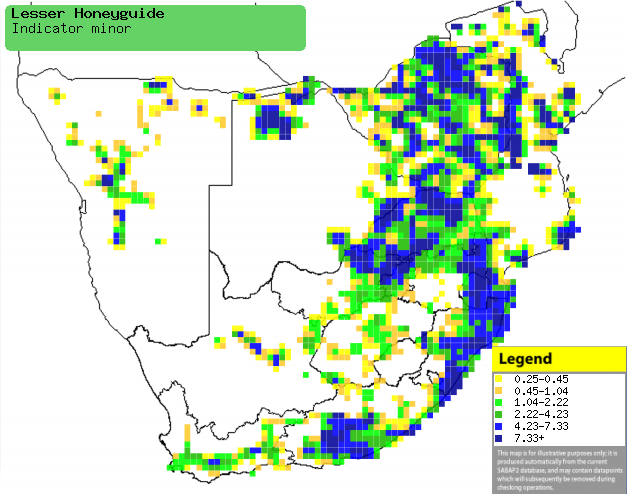 |
|
Distribution of Lesser honeyguide in southern Africa,
based on statistical smoothing of the records from first SA Bird Atlas
Project (©
Animal Demography unit, University of
Cape Town; smoothing by Birgit Erni and Francesca Little). Colours range
from dark blue (most common) through to yellow (least common).
See here for the latest distribution
from the SABAP2. |
Food
It feeds on a wide variety of insects,
as well as a number of products and adults of Apis mellifera (Honey
bee). Unlike other honeyguides, it does not lead mammals to bees nests. It feeds
on insects in crevices, bark, leaves and branches, and is also highly adept at
finding dry honeycombs. The following food items have been recorded in its diet:
Breeding
- It is a brood parasite, meaning that it lays its eggs
in other bird nests, which are usually barbets. The host, thinking that the
egg is its own, incubates the egg, and cares for the chick. It is also polygynous, as it may have multiple mates at the same time. The following
bird species have been recorded to be parasitized by the Greater honeyguide:
- Egg-laying season from August-February, peaking from October-November.
- The parasitising process involves either the breeding pair or just the
female. If there are both,
the male distracts the host bird while the female rushes into the
nest, laying one egg before the pair leave. If it is just the female, she
simply lays its egg while the host bird is out. The eggs are laid in series
of 2-7, each in a different nest, laying about 18-20 eggs in the whole
breeding season.
- Soon after the chick hatches it viciously kills the host birds chicks,
with extraordinary strength. It stays in the nest for about 37-38 days
before becoming independent.
Threats
Not threatened, in fact its range in the Western Cape has
increased recently because of the increase in
Tricholaema leucomelas (Acacia
pied barbet, Pied barbet) population, which was caused by the spread of alien
trees.
References
-
Hockey PAR, Dean WRJ and Ryan PG (eds) 2005. Roberts
- Birds of southern Africa, VIIth ed. The Trustees of the John Voelcker
Bird Book Fund, Cape Town.
|
